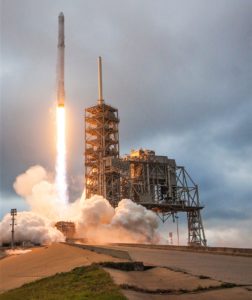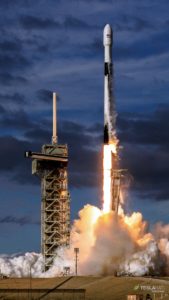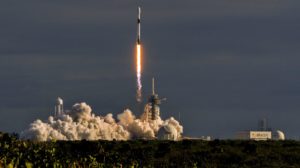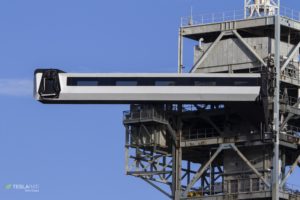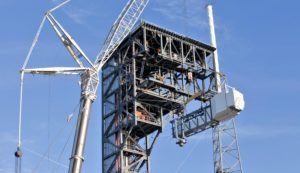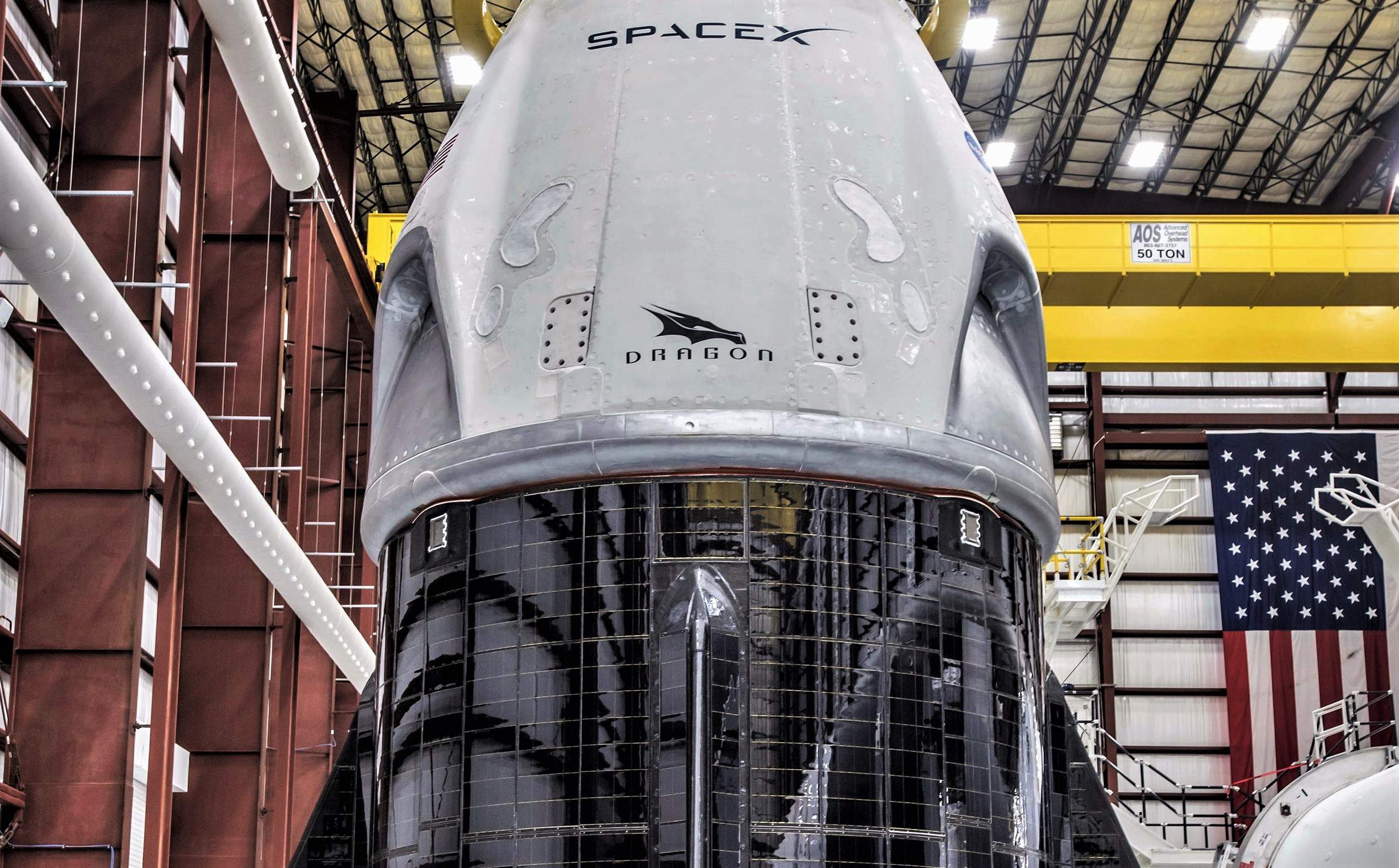
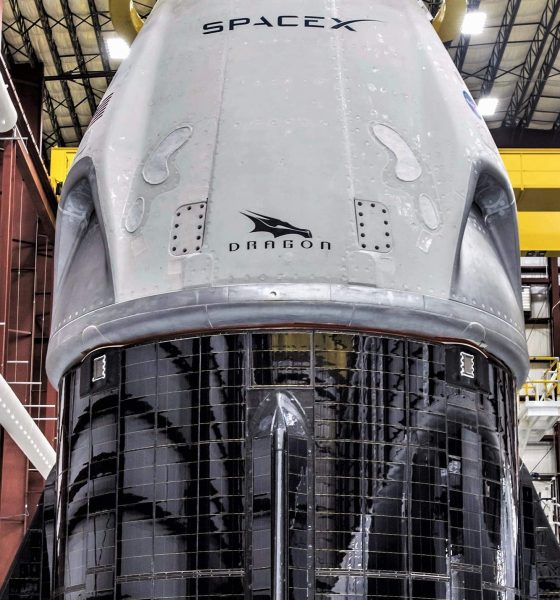
News
SpaceX’s orbit-ready Crew Dragon nears first trip out to Pad 39A atop Falcon 9
Now primarily reserved for launches involving the company’s Falcon Heavy rocket and Crew Dragon spacecraft, SpaceX has begun touching up its Launch Complex 39A (LC-39A) pad with new paint and hardware in anticipation of the first orbital launch of Crew Dragon, set to occur as early as the evening of January 17th.
A little over three weeks away from the milestone mission’s launch, SpaceX has – even more importantly – rolled Pad 39A’s transporter/erector (T/E) into an on-site hangar, where Falcon 9 B1051 and Crew Dragon C201 are awaiting final integration and fit checks prior to a series of careful dress rehearsals including a dry (mission) rehearsal, a wet rehearsal (WDR), and an on-pad static fire.
@NASASpaceflight looks SpaceX is giving the tower at 39A a fresh paint job pic.twitter.com/l6ZD6c6PvN
— Evan Richard (@TheEvangineer) December 21, 2018
Over the past month or two, SpaceX’s Florida pad technicians have gradually begun a number of small but important modifications to Launch Complex 39A (LC-39A, Pad 39A), primarily focused on what is known as its Fixed Service Structure (FSS), a tall and rectangular tower off to the side of SpaceX’s launch mount. Notably, SpaceX has completed the demolition and removal of all extraneous Pad 39A structures related to its decades of service under the Space Shuttle program and has further modified the FSS to allow for the installation of Crew Dragon’s Crew Access Arm (CAA), completed earlier in 2018.
With those major tasks complete, SpaceX workers have since subtly modified the pad’s transporter/erector (T/E) for Crew Dragon and begun to both paint and clad the tower, both designed to minimize wear and tear from regular launch operations and coastal Florida’s omnipresent sea breeze. Captured in photos from the November 2018 launch of Es’hail-2, the tower cladding appears to be made of double-layered sheets of half-opaque black plastic, while the paint of choice is gray (and black accents) to mesh with the tower’s minimalist arm.
Given CEO Elon Musk’s well-known preference that his companies, products, and facilities look “beautiful”, this is almost certainly being done on his whim, albeit for the best. A coat of paint and minimalist arm design are probably cost a minimal amount of money and effort, but the bare minimum still easily sets SpaceX’s facilities apart from competitors like ULA and even NASA.
- A panorama of LC-39A in November 2017. (Tom Cross/Teslarati)
- Pad 39A seen after most extraneous Shuttle-era hardware had been removed, November 2018. (Tom Cross)
- Falcon 9 B1047 lifts off from Pad 39A, November 2018. (Tom Cross)
- A detailed look at SpaceX’s shiny new Crew Access Arm, installed on Pad 39A in August 2018. (Tom Cross)
- Boeing/ULA’s Starliner Crew Access Arm (CAA) was installed at LC-41 in 2015. (NASA)
Crew Dragon closes in on orbital launches
For perhaps the first in the history of NASA’s Commercial Crew Program (CCP), SpaceX revealed earlier this month that all the major hardware components needed for the first orbital launch of Crew Dragon were under one literal roof at the company’s Pad 39A launch complex. In the weeks and months prior, both Musk and COO/President Gwynne Shotwell stated rather explicitly that that hardware would indeed be physically ready to launch no later than the end of 2018, even suggesting that SpaceX engineers and technicians would attempt to conduct a dry (propellant-less) Mission Dress Rehearsal (MDR) to ensure everything fits together in late December.
omfg @spacex just posted some absolutely stunning photos inside Pad 39A's hangar: meet the first completed Crew Dragon and its Falcon 9 Block 5 rocket (B1051) 😀 In the far left (second photo), you can also see what is probably B1047 in the midst of refurbishment. pic.twitter.com/NWULyAEhpQ
— Eric Ralph (@13ericralph31) December 18, 2018
As of last week, 39A’s T/E disappeared from its launch mount, indicating that the pad crew had rolled the massive apparatus into the complex’s integration hangar, where the above Falcon 9(s) and Demo-1 Crew Dragon were stashed as of December 18th. Having spent a solid five days in the hangar, SpaceX technicians have likely begun or even completed the integration of Falcon 9 B1051 and Crew Dragon and proceeded to integrate that full rocket/spacecraft combo to the T/E. As such, the T/E could very well roll out of its hangar with Falcon 9 and Crew Dragon attached at almost any moment between now and 2019.
If all goes as planned and NASA and SpaceX can wrap up paperwork (certification, approvals, etc) in the next week or two, SpaceX could launch an uncrewed Crew Dragon into orbit as early as the evening of January 17th. The rocket’s rollout will be the be the next major milestone so stay tuned!
For prompt updates, on-the-ground perspectives, and unique glimpses of SpaceX’s rocket recovery fleet check out our brand new LaunchPad and LandingZone newsletters!

News
Tesla FSD fleet is nearing 7 billion total miles, including 2.5 billion city miles
As can be seen on Tesla’s official FSD webpage, vehicles equipped with the system have now navigated over 6.99 billion miles.

Tesla’s Full Self-Driving (Supervised) fleet is closing in on almost 7 billion total miles driven, as per data posted by the company on its official FSD webpage.
These figures hint at the massive scale of data fueling Tesla’s rapid FSD improvements, which have been quite notable as of late.
FSD mileage milestones
As can be seen on Tesla’s official FSD webpage, vehicles equipped with the system have now navigated over 6.99 billion miles. Tesla owner and avid FSD tester Whole Mars Catalog also shared a screenshot indicating that from the nearly 7 billion miles traveled by the FSD fleet, more than 2.5 billion miles were driven inside cities.
City miles are particularly valuable for complex urban scenarios like unprotected turns, pedestrian interactions, and traffic lights. This is also the difference-maker for FSD, as only complex solutions, such as Waymo’s self-driving taxis, operate similarly on inner-city streets. And even then, incidents such as the San Francisco blackouts have proven challenging for sensor-rich vehicles like Waymos.
Tesla’s data edge
Tesla has a number of advantages in the autonomous vehicle sector, one of which is the size of its fleet and the number of vehicles training FSD on real-world roads. Tesla’s nearly 7 billion FSD miles then allow the company to roll out updates that make its vehicles behave like they are being driven by experienced drivers, even if they are operating on their own.
So notable are Tesla’s improvements to FSD that NVIDIA Director of Robotics Jim Fan, after experiencing FSD v14, noted that the system is the first AI that passes what he described as a “Physical Turing Test.”
“Despite knowing exactly how robot learning works, I still find it magical watching the steering wheel turn by itself. First it feels surreal, next it becomes routine. Then, like the smartphone, taking it away actively hurts. This is how humanity gets rewired and glued to god-like technologies,” Fan wrote in a post on X.
News
Tesla starts showing how FSD will change lives in Europe
Local officials tested the system on narrow country roads and were impressed by FSD’s smooth, human-like driving, with some calling the service a game-changer for everyday life in areas that are far from urban centers.

Tesla has launched Europe’s first public shuttle service using Full Self-Driving (Supervised) in the rural Eifelkreis Bitburg-Prüm region of Germany, demonstrating how the technology can restore independence and mobility for people who struggle with limited transport options.
Local officials tested the system on narrow country roads and were impressed by FSD’s smooth, human-like driving, with some calling the service a game-changer for everyday life in areas that are far from urban centers.
Officials see real impact on rural residents
Arzfeld Mayor Johannes Kuhl and District Administrator Andreas Kruppert personally tested the Tesla shuttle service. This allowed them to see just how well FSD navigated winding lanes and rural roads confidently. Kruppert said, “Autonomous driving sounds like science fiction to many, but we simply see here that it works totally well in rural regions too.” Kuhl, for his part, also noted that FSD “feels like a very experienced driver.”
The pilot complements the area’s “Citizen Bus” program, which provides on-demand rides for elderly residents who can no longer drive themselves. Tesla Europe shared a video of a demonstration of the service, highlighting how FSD gives people their freedom back, even in places where public transport is not as prevalent.
What the Ministry for Economic Affairs and Transport says
Rhineland-Palatinate’s Minister Daniela Schmitt supported the project, praising the collaboration that made this “first of its kind in Europe” possible. As per the ministry, the rural rollout for the service shows FSD’s potential beyond major cities, and it delivers tangible benefits like grocery runs, doctor visits, and social connections for isolated residents.
“Reliable and flexible mobility is especially vital in rural areas. With the launch of a shuttle service using self-driving vehicles (FSD supervised) by Tesla in the Eifelkreis Bitburg-Prüm, an innovative pilot project is now getting underway that complements local community bus services. It is the first project of its kind in Europe.
“The result is a real gain for rural mobility: greater accessibility, more flexibility and tangible benefits for everyday life. A strong signal for innovation, cooperation and future-oriented mobility beyond urban centers,” the ministry wrote in a LinkedIn post.
News
Tesla China quietly posts Robotaxi-related job listing
Tesla China is currently seeking a Low Voltage Electrical Engineer to work on circuit board design for the company’s autonomous vehicles.

Tesla has posted a new job listing in Shanghai explicitly tied to its Robotaxi program, fueling speculation that the company is preparing to launch its dedicated autonomous ride-hailing service in China.
As noted in the listing, Tesla China is currently seeking a Low Voltage Electrical Engineer to work on circuit board design for the company’s autonomous vehicles.
Robotaxi-specific role
The listing, which was shared on social media platform X by industry watcher @tslaming, suggested that Tesla China is looking to fill the role urgently. The job listing itself specifically mentions that the person hired for the role will be working on the Low Voltage Hardware team, which would design the circuit boards that would serve as the nervous system of the Robotaxi.
Key tasks for the role, as indicated in the job listing, include collaboration with PCB layout, firmware, mechanical, program management, and validation teams, among other responsibilities. The role is based in Shanghai.
China Robotaxi launch
China represents a massive potential market for robotaxis, with its dense urban centers and supportive policies in select cities. Tesla has limited permission to roll out FSD in the country, though despite this, its vehicles have been hailed as among the best in the market when it comes to autonomous features. So far, at least, it appears that China supports Tesla’s FSD and Robotaxi rollout.
This was hinted at in November, when Tesla brought the Cybercab to the 8th China International Import Expo (CIIE) in Shanghai, marking the first time that the autonomous two-seater was brought to the Asia-Pacific region. The vehicle, despite not having a release date in China, received a significant amount of interest among the event’s attendees.

